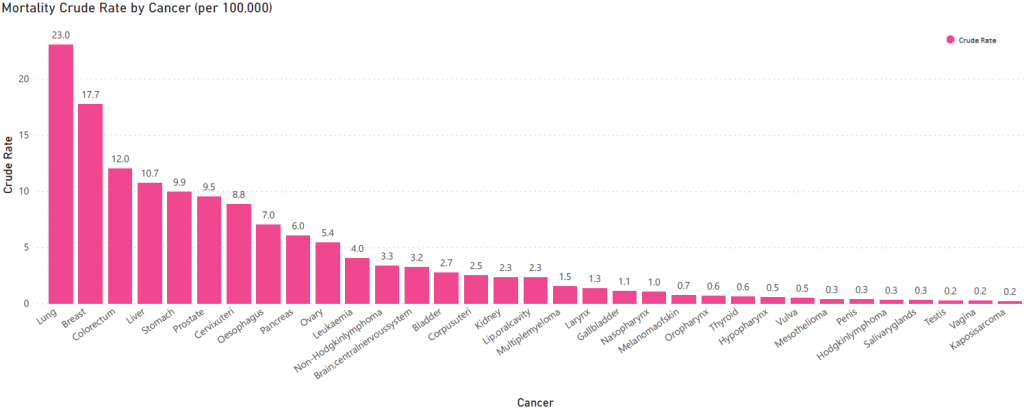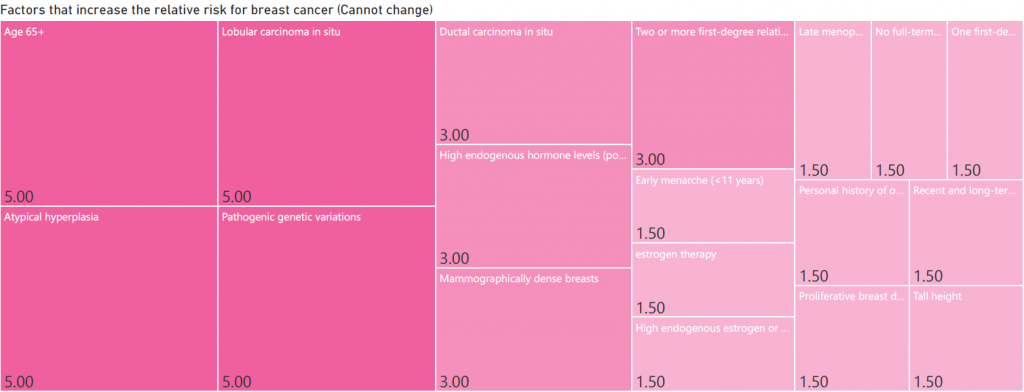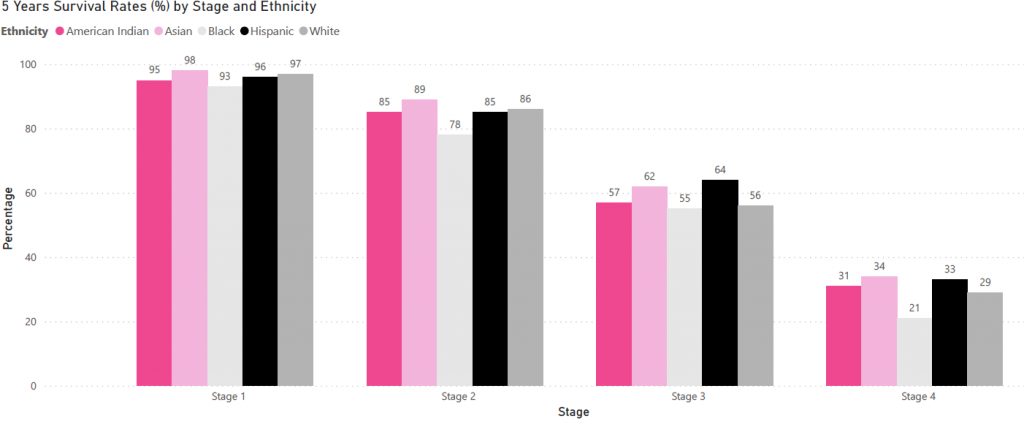
This publication attempts to summarize current scientific information about breast cancer.
Breast cancer is a group of diseases in which cells in breast tissue change and divide uncontrolled, typically resulting in a lump or mass. Most breast cancers begin in the lobules (milk glands) or in the ducts that connect the lobules to the nipple.
Breast cancer is the most common cancers worldwide as shown in the figure below, accounting for approximately 19,292,789 new cases in 2020. Almost 100% of the cases are diagnosed among women.
Approximately 1 in 8 women (13%) will be diagnosed with invasive breast cancer in their lifetime

Top countries with highest rates
Breast cancer incidence in Belgium is on the top of the world, 200.7/100.000 women/year 2020.
The explanation of this high incidence in the country is probably the accumulation of risk factors
(many of them are linked to lifestyle), and the impact of screening and registration of cases. The
relative impact of each of theses factors is less clear because we don’t have powerful statistical
studies.
Belgium is slightly above the European mean for breast cancer mortality.
Breast cancers are responsible for around 3% of all-cause mortality in Belgian women.

Estimated number of deaths
Breast cancer is the second leading cause of cancer deaths among women with a rate of 18 women per
100,000. The development of breast cancer is a multi-step process involving multiple cell types, and its
prevention remains challenging in the world. Early diagnosis of breast cancer is one of the best
approaches to prevent this disease. In some developed countries, the 5-year relative survival rate of
breast cancer patients is above 80% due to early prevention.

Relative risk factors we cannot change
Breast cancers are linked to many risk factors (causes), alone or combined. We are displaying
below the main risk factors that cannot be changed or in another words, not related to
lifestyle behavior.
How to explain the relative risk?
For example, if at age of 25 a women have the risk to have breast cancer of 10%; If she has 2 or more first
degree relative with breast cancer history (associated risk as the figure below is 3.00); Then the total risk would
be = 10% * 3 = 30%.
Of course, in this case the subject women should do more frequent mammography for early detection.

Relative risk factors we can change – Lifestyle
It is estimated that about one-third of postmenopausal breast cancers are linked to potentially
modifiable factors, including postmenopausal obesity, physical inactivity, use of combined
estrogen and progestin menopausal hormones, alcohol consumption, and not breastfeeding.
The women lifestyle factors are thought to influence breast cancer risk by increasing cell division, thereby
increasing the likelihood of DNA damage, as well as promoting cancer growth.
Although exposures that influence risk accumulate throughout a woman’s life, research suggests that early life exposures during breast development may be particularly critical.

Female breast cancer treatment patterns by stage
Most women with early-stage breast cancer will have some type of surgery, which is often combined with other treatments such as radiation therapy (RT), chemotherapy (Chemo), hormone therapy, and/or targeted therapy to reduce the risk of recurrence.

5 Years Survival Rate by Stage at Diagnosis (Mammography/Screening) and Ethnicity
Early detection of breast cancer by mammography/screening reduces the risk of breast cancer death and increases treatment options, including less extensive surgery and/or the use of chemotherapy with fewer side effects.
Combined analysis of breast cancer screening in randomized trials has demonstrated an overall reduction in breast cancer deaths of about 20%.

Finding breast cancer early and getting cancer treatment are the most important methods to prevent deaths from breast cancer. Breast cancer that is found when it’s small and not spread, is easier to treat successfully. Getting regular tests is the most reliable way to find breast cancer early.
